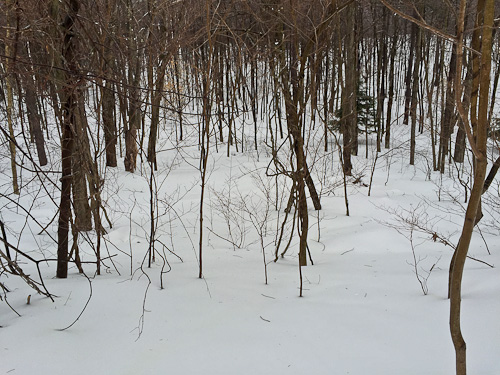 Insight Journal: Tell us something about your path to the Dharma.
Insight Journal: Tell us something about your path to the Dharma.
David Chernikoff: I was initially introduced to meditation practice when I began the study and practice of yoga in January of 1971. At the time, I was an undergraduate psychology major in my junior year at Tulane University in New Orleans. My first two years at school were largely about sowing wild oats and exploring what I had learned from the mainstream culture about how to be happy. Sadly, and also fortunately, I came to see that hedonism simply didn’t work. I’d been sold a false bill of goods and I went through several months of depression and anxiety when I realized I had no map or model for how to go forward.
On my 21st birthday, I borrowed a book on yoga from a friend and experienced what felt like a gentle yet powerful conversion experience. I began to study and practice hatha yoga with great intensity and commitment. An interest in meditation followed naturally and I soon met a teacher, Swami Satchidananda, who became my first spiritual guide. After graduating from Tulane, I trained as teacher of Integral Yoga, an integrated approach that includes asanas, meditation, service, and devotion.
In 1974, primarily because Ram Dass was teaching a course on the Bhagavad Gita, I moved to Boulder, Colorado to be a student at the inaugural summer program offered by Naropa Institute, now Naropa University. It was there that I met and trained with Chogyam Trungpa, Rinpoche, who introduced me to Buddhist teachings and practices. While I felt very drawn to the teachings and the practice of Buddhist meditation in particular, I felt confused much of the time about the sangha scene that had grown up around Chogyam Trungpa.
In 1977, I came across Joseph Goldstein’s book, The Experience of Insight, and I felt an immediate resonance with the way Joseph presented the teachings. I started practicing insight meditation on my own, with Joseph’s book as a guide, and eventually began attending retreats at IMS. In the fall of 1980, I participated in the three-month course with Joseph, Jack, Sharon, and other teachers, and that deepened my practice in a way that words don’t adequately describe. I realized I’d found my “home path” and that realization was accompanied by heart-felt joy and gratitude.

At various times in the years that followed, I studied and practiced with teachers from other Buddhist traditions, including three years in Nepal with Tibetan teachers and several years under the guidance of a Zen teacher in northern California. Throughout that period, however, I stayed close to the simplicity and clarity of insight meditation and the views and practices associated with it. In 1988, I began teaching vipassanā retreats in Nepal and I was later invited to participate in the first training program at Spirit Rock for Community Dharma Leaders.
After returning from Asia in 1990, I took a teaching position in the psychology department at Naropa University, where I taught Buddhist meditation and contemplative psychotherapy on and off for twenty years. Several of us who had trained as Community Dharma Leaders in that first group started teaching insight meditation in Boulder and Denver in the early to mid 90s. There is now a thriving network of teachers and practice groups in the Front Range area of Colorado, with weekly groups meeting most days of the week and regular classes, retreats, and kalyāna mitta groups. More recently, we’ve started some associated eco-dharma groups that are working together to understand how to skillfully address the realities of climate change and related social, political, and economic issues.
IJ: How was it that you became interested in the relationship between the aging process and the experience of spiritual awakening?
DC: In 1995, when I was teaching in the MA program in transpersonal psychology at Naropa University, the religion department invited Rabbi Zalman Schachter-Shalomi to come to Boulder for a recently created chair called the World Wisdom Chair. “Reb Zalman”, as he was known to his many students, colleagues, and friends, brought new meaning to the phrase “wise elder”. He knew how to “take his seat” as an elder and he had a passionate belief that what he called “elder wisdom” was something our planet desperately needed. Toward that end, he had been teaching workshops and seminars on themes like “Aging Wisely” and what he called “From Aging to Sage-ing”, a title he used for a book on his work. He had earlier started The Spiritual Eldering Institute, a national organization that later changed its name to Sage-ing International. It’s an educational and training institute that develops and offers programs to people interested in deepening their understanding of the aging process and shifting the dominant paradigm associated with growing old in our culture. A committed Jewish practitioner, Reb Zalman had a deep appreciation for all of the authentic wisdom traditions and an awareness that each had the potential to provide a unique and valuable contribution to our collective well-being. Simply put, Reb Zalman and I really hit it off and he became a mentor and spiritual friend to me.
I was 46 years old when I met him and I was just feeling the beginnings of the negative age-related conditioning I had grown up with. I went through his institute’s training program, was invited to join the board of directors, and was later hired full-time to be the institute’s director of education and training. During that period, a colleague and I created a program called “The Tao of Aging”. For several years, I taught programs and trainings in various parts of the United States as well as in Canada and Ireland. I had begun to integrate my interest in Buddhist teachings with the materials we had developed at the institute and I was very excited about the way the work was evolving. I created a retreat/workshop hybrid that combined the silence of insight meditation with experiential partner and small group exercises.
I recently turned sixty-five years old so ideas about aging that were essentially theoretical in 1996 now have a relevance and meaning that shapes the way I live my life. It turned out to be a tremendous blessing to know and work with someone who had a wise and wholesome vision for growing older and for the possibility of dying with a sense of completion and celebration. Reb Zalman died peacefully on July 3rd of last year at the age of eighty-nine.
IJ: Some people use the phrase “conscious aging” to describe the kind of material you teach. How do you understand this phrase?
DC: For me, the phrase conscious aging is a variation of the phrase conscious living as applied to a particular stage in the lifespan. I think of conscious aging as a growth-oriented way of living that emphasizes the cultivation and celebration of wisdom, love, and insight into the nature of ultimate reality. These words also serve to describe my understanding of the Buddhist path of awakening. Because we tend to be more aware of the finiteness and fragility of our physical bodies as we grow older, some of us are fortunate enough to experience a powerful sense of urgency to make the best possible use of whatever time we have on earth. This urgency, when wisely balanced with a felt sense of appreciation for the richness of each moment, can be a life-changing inspiration that clarifies our priorities and allows us to live the lives we most deeply want to be living.

IJ: Are there particular Buddhist teachings that have informed your exploration of the aging process and that you incorporate into your retreats and workshops?
DC: There are many Buddhist teachings that have informed my exploration of aging and dying. In that I’m primarily a practitioner who has worked for many years as a teacher, counselor, and psychotherapist, I’ve generally approached the teachings with an interest in their practical application to my own life and the lives of other living beings, both human and non-human. The four noble truths are a cornerstone in my practice and I return to them regularly in the hope of deepening my own realization of their transformational power. In that the aging process involves an accelerated awareness of change, of anicca, it invites us to take the four noble truths into our hearts with passionate interest and appreciation. I’ve worked with the [five remembrances][1] for many years, in particular the practice of death awareness, maranassati.
In the late 70s and early 80s, I did hospice work in Colorado and New Mexico, working for a period of time at the Hanuman Foundation Dying Center that Ram Dass and Stephen Levine set up in Santa Fe, and later directing a hospice in Las Cruces, NM. Teachings on the three characteristics took on a new and deeper level of meaning as the hospice work slowly chipped away at the deeply conditioned denial of death I had grown up with. Eventually I became convinced that there were skillful ways of blending the wisdom of traditional Buddhist teachings with the perspectives of western transpersonal psychology that could help us revitalize the role of the wise elder in our society.
IJ: Will this course be fresh enough for those who have taken either the on-campus or online versions of the BCBS Going Forth course? What kind of format will you be using for this course and how will it be different from what’s been presented to date?
DC: My intention in offering this course is to complement the previous on-campus and online versions of the BCBS Going Forth program. While there may be some overlap with what has previously been addressed, I see that kind of repetition as a valuable part of the de-conditioning process that is an important aspect of the Going Forth program. It’s similar to hearing spiritual teachings one has heard before.
There will also be a lot of material in this weekend, some of which draws from my work with the Spiritual Eldering Institute, that has not been presented in earlier courses. The weekend format will include an early morning meditation period and Noble Silence until the first group session after breakfast. There will also be short meditation periods before our morning and afternoon sessions in the Farmhouse. Our morning and afternoon meetings will be highly experiential, often involving a brief talk on a particular concept, followed by a guided exercise designed to explore it on a personal level, and then a period of what I call “harvesting”. This involves sharing with partners, small groups, and, in some cases with the whole group, so that we can create a vibrant and supportive learning community.
In regard to the aging process, I see myself as a trekking guide of a sort. I’m very much on the same aging journey as everyone else and I believe that participants bring a great wealth of knowledge, insight, and life experience to courses of this kind. Our evening activities will vary, depending upon my sense of the group and what I think would be most beneficial. Possibilities include informal conversation to help assimilate our daytime activities, DVDs in which respected teachers share their views of aging and elderhood, and/or additional meditation practices specifically aimed at deepening our integration of the five remembrances.

IJ: Our culture is so very youth-focused. How can we bring the idea of “wise elders” back into the picture?
DC: This strikes me as a critically important and intriguing question. What inspired me to want to study and teach about the relationship between aging and spiritual awakening was meeting people who understood the importance of wise elders in a healthy society. When a society stratifies in a primarily horizontal manner the way our society has, everyone loses. The young people lose the benefit of elder guidance and maturity that is informed and enriched by long life experience. The old people lose the sense of purpose, meaning, and value that naturally arises when younger people are receptive to mentors and spiritual friends. I don’t feel naïve or unrealistic in this regard and I recognize the complexity of this issue. Simply growing old, in and of itself, is clearly not sufficient to make a person a wise elder. The experiences of life must be assimilated, synthesized, and integrated in such a way as to actualize our innate human capacity for compassion and wisdom. My vision for this workshop is that we will take some steps in that direction, both individually and collectively.
IJ: Is this course only relevant for people who have reached a certain age, perhaps fifty years old, or would it be useful for younger people as well?
DC: The majority of people who have attended past courses have been either in mid-life or older. There has generally been a small number of younger people who choose to come. These are either people who work with elders professionally or people who recognize the course as an opportunity to get an early start on uprooting the dominant view of aging in our society and replacing it with a perspective that is wiser and more life enhancing.
David Chernikoff, M.Div., L.C.S.W., is a meditation teacher, spiritual counselor, and licensed psychotherapist who taught psychology and meditation at Naropa University for many years. As the former director of education and training for the Spiritual Eldering Institute (now called Sage-ing International), he has taught aging and awakening programs throughout the U.S. as well as in Canada and Ireland. David is currently one of the guiding teachers of the Insight Meditation Community of Colorado (www.insightcolorado.org) and has a private practice in Boulder.
[1]: The Five Remembrances
From the Upajjhatthana Sutta, [AN 5.57]
- I am sure to become old; I cannot avoid ageing.
- I am sure to become ill; I cannot avoid illness.
- I am sure to die; I cannot avoid death.
- I must be separated and parted from all that is dear and beloved to me.
- I am the owner of my actions, heir of my actions, actions are the womb (from which I have sprung), actions are my relations, actions are my protection. Whatever actions I do, good or bad, of these I shall become their heir.
–Nyanaponika & Bodhi (1999), p. 135.